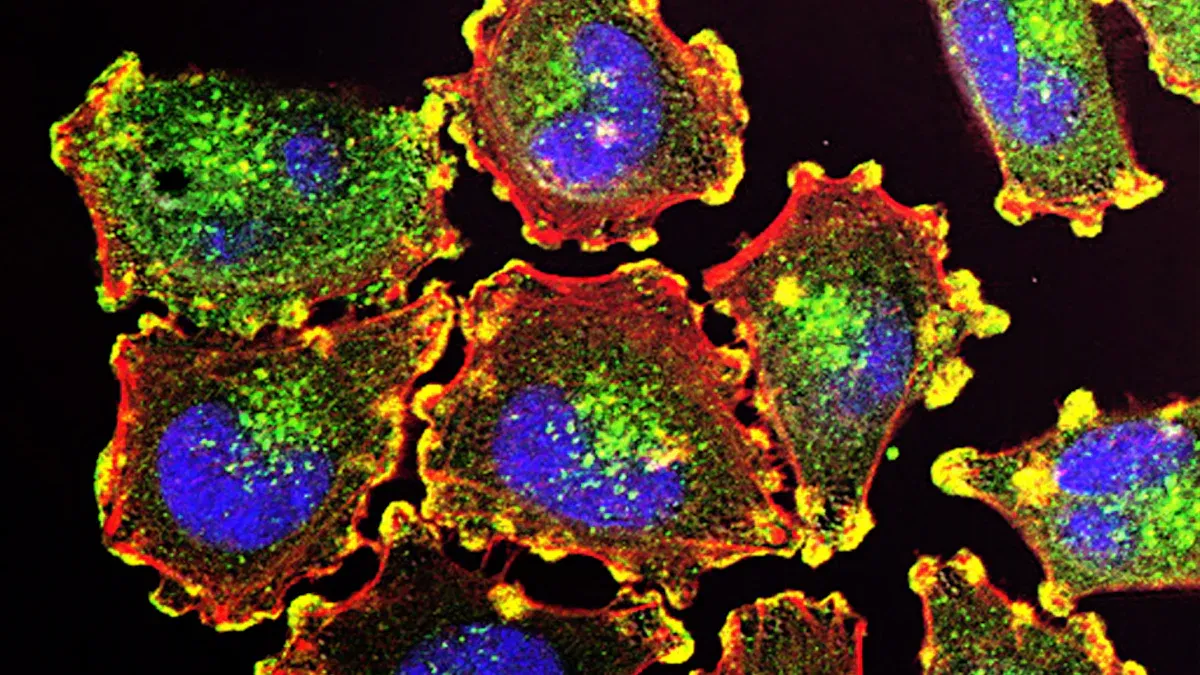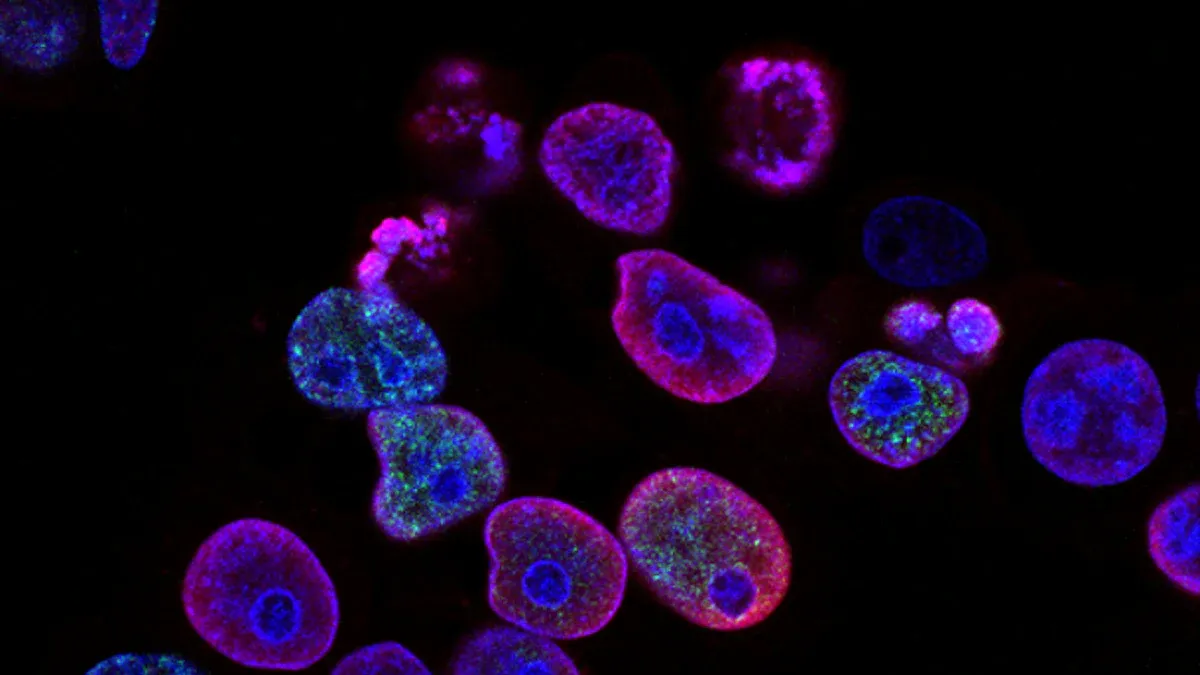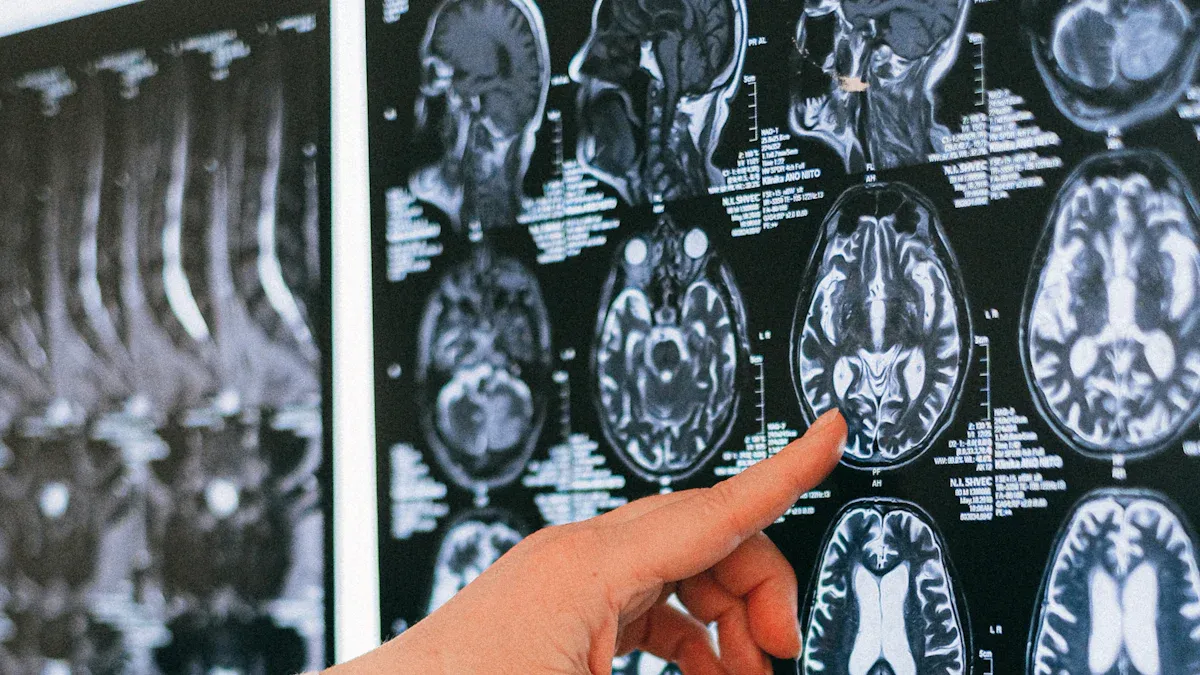Is Cancer a Single Disease or Many?

Cancer is not a single disease. It represents a group of diseases that share common traits, such as uncontrolled cell growth. However, cancers differ in their origins, behaviors, and responses to treatment. For example, genetic and environmental factors shape how cancers develop and behave. Research shows that genetic diversity among cancer cells can even vary within the same tumor, influencing treatment outcomes. Globally, nearly 20 million new cancer cases were diagnosed in 2022, with 9.7 million deaths. These numbers highlight the complexity of cancer and the need to understand its many forms. Is Cancer Just One Disease? Understanding the Many Types of Cancer requires exploring its diversity.
Key Takeaways
Cancer is not just one disease; it has over 100 types.
Each type has its own traits and acts differently.
Knowing cancer's variety helps doctors diagnose and treat it better.
Changes in genes and the environment affect how cancer grows.
Treatments designed for each cancer type work better and are safer.
Understanding gaps in care can help all patients get better treatment.
Is Cancer Just One Disease? Understanding the Many Types of Cancer

Common Traits Across All Cancers
Uncontrolled cell growth
All cancers share the hallmark of uncontrolled cell growth. Normal cells divide in a regulated manner, but cancer cells bypass these controls. They continue to multiply even when the body does not need new cells. This unchecked growth forms tumors, which can disrupt the function of surrounding tissues.
Ability to invade surrounding tissues
Cancer cells possess the ability to invade nearby tissues. Unlike normal cells, which stay in their designated areas, cancer cells break through boundaries. They release enzymes that degrade surrounding structures, allowing them to spread locally. This invasive behavior often leads to organ damage and complications.
Potential to spread (metastasis)
Metastasis is another defining feature of cancer. Cancer cells can travel through the bloodstream or lymphatic system to distant parts of the body. Once they settle in a new location, they form secondary tumors. This process makes cancer more challenging to treat and is a major cause of cancer-related deaths.
How Cancer Develops
Genetic mutations and cellular changes
Cancer begins with genetic mutations in normal cells. These mutations disrupt the genes that control cell growth and repair. Over time, additional mutations accumulate, leading to cancerous changes. Researchers have identified a sequence of steps in this process:
Normal cells acquire driver mutations, which trigger uncontrolled growth.
Selective forces in the body allow these mutated cells to thrive.
Evolutionary processes, such as genetic drift and natural selection, drive further changes in cancer cells.
Environmental and lifestyle factors
Your environment and lifestyle choices play a significant role in cancer development. Smoking, for example, is the leading cause of cancer worldwide. Diet, exposure to ultraviolet radiation, and pollutants also contribute to cancer risk. Studies show that these factors interact with genetic predispositions, increasing the likelihood of cancer.
Study Design | Methods of Exposure Ascertainment | Results Summary |
|---|---|---|
Ecological Studies | Surveys, Environmental Sampling | Some studies found significant associations, while others did not identify any. |
Case-Control Studies | Medical Records, Interviews | Statistically significant associations reported with limitations in interpretation. |
Cross-Sectional Studies | Pre-existing Data, Geospatial Methods | Identified spatial patterns and standardized incidence ratios. |
Role of the immune system in cancer progression
Your immune system plays a dual role in cancer. It can detect and destroy abnormal cells, preventing cancer development. However, cancer cells can evade immune detection by disguising themselves or suppressing immune responses. This ability allows them to grow unchecked and spread throughout the body.
The Diversity of Cancer Types

Categorization by Origin
Carcinomas (epithelial cells)
Carcinomas are the most common type of cancer. They originate in epithelial cells, which line the surfaces of organs and tissues. Examples include lung, breast, and colon cancers. These cancers often grow in layers, making early detection crucial for effective treatment.
Sarcomas (connective tissues)
Sarcomas develop in connective tissues like bones, muscles, and fat. They are rare compared to carcinomas but can be aggressive. Osteosarcoma, a type of bone cancer, often affects younger individuals. Early diagnosis can improve outcomes significantly.
Leukemias and lymphomas (blood and immune cells)
Leukemias and lymphomas arise in blood-forming tissues and the immune system. Leukemia affects the bone marrow and blood, while lymphoma targets lymph nodes. These cancers disrupt normal blood cell production, leading to symptoms like fatigue and infections.
Description | |
|---|---|
Primary Site of Origin | Cancers classified by where they originate, e.g., breast, lung, prostate. |
Histological Types | Cancers classified by tissue types, e.g., carcinoma, sarcoma, leukemia. |
Types of Cancer
Solid tumors (e.g., breast, lung, prostate)
Solid tumors form masses in organs or tissues. Breast and prostate cancers are among the most diagnosed worldwide. Lung cancer, often linked to smoking, remains a leading cause of cancer-related deaths.
Hematologic cancers (e.g., leukemia, lymphoma)
Hematologic cancers affect the blood and lymphatic systems. These cancers do not form solid tumors but spread through the bloodstream. Treatments often include chemotherapy and bone marrow transplants.
Rare cancers (e.g., sarcomas, neuroendocrine tumors)
Rare cancers, such as neuroendocrine tumors, account for a small percentage of cases. Despite their rarity, they require specialized care. Sarcomas, for instance, demand tailored treatments due to their unique characteristics.

Unique Characteristics of Different Cancers
Variations in growth rates
Cancers grow at different rates. Some, like certain prostate cancers, progress slowly, while others, like pancreatic cancer, spread rapidly. Understanding growth rates helps doctors plan treatments effectively.
Differences in response to treatment
Each cancer type responds differently to treatments. Hormone therapies work well for breast and prostate cancers but not for lung cancer. Tailored approaches improve success rates and reduce side effects.
Genetic and molecular profiles
Genetic mutations define each cancer’s behavior. For example, lung cancer often involves mutations in the EGFR gene, while melanoma may have BRAF mutations. Identifying these profiles allows for precision medicine, targeting the cancer’s specific weaknesses.
Cancer Type | 90th Percentile Rate | Relative Magnitude | |
|---|---|---|---|
Lip, oral cavity | 2.3 (China, Hefei) | 9.1 (Russia, Arkhangelsk) | 3.9 |
Nasopharynx | 0.3 (Germany, Lower Saxony) | 2.7 (Thailand, Khon Kaen) | 8.1 |
Other pharynx | 0.8 (Peru, Lima) | 6.5 (USA, North Carolina) | 8.3 |
Esophagus | 2.0 (Turkey, Bursa) | 10.7 (France, Calvados) | 5.3 |
Brain, nervous system | 2.8 (Japan, Yamagata Prefecture) | 7.1 (Poland, Lublin) | 2.5 |
Thyroid | 1.3 (China, Haimen County) | 6.8 (Turkey, Trabzon) | 5.3 |
Hodgkin lymphoma | 0.5 (China, Anshan City) | 3.5 (Spain, Basque Country) | 7.5 |
Non-Hodgkin lymphoma | 4.7 (India, Chennai) | 15.0 (USA, Michigan) | 3.2 |
Multiple myeloma | 1.1 (China, Jiashan County) | 7.0 (Italy, Modena) | 6.2 |
Leukemia | 4.9 (Costa Rica) | 12.1 (Australian Capital Territory) | 2.5 |
Why Understanding Cancer’s Diversity Matters
Implications for Diagnosis
Importance of identifying cancer type and stage
Identifying the type and stage of cancer is critical for effective treatment. Each cancer type behaves differently, and its stage determines how far it has spread. Early-stage cancers often respond better to treatment, while advanced stages may require more aggressive approaches. For example, lung cancer diagnosed at stage I has a significantly higher survival rate compared to stage IV. Accurate staging helps doctors choose the best treatment plan for you.
Role of biomarkers and genetic testing
Biomarkers and genetic testing play a vital role in diagnosing cancer. These tools help identify specific mutations or proteins linked to certain cancers. For instance, testing for the HER2 protein in breast cancer guides the use of targeted therapies. However, disparities exist in testing rates. Studies show that only 14% of Black patients with lung cancer undergo genetic testing, compared to 26% of White patients. Addressing these gaps ensures equitable access to advanced diagnostic tools.
Cancer Type | Testing Rate (Black Patients) | Testing Rate (White Patients) |
|---|---|---|
Lung Cancer | 14% | 26% |
Ovarian Cancer | N/A | N/A |
Implications for Treatment
Tailored therapies based on cancer type
Tailored therapies focus on the unique characteristics of your cancer. Molecularly targeted therapies, for example, attack specific abnormalities in cancer cells. These treatments improve outcomes and reduce side effects. Companion diagnostics identify patients who will benefit most, ensuring precision in treatment.
Evidence Type | Description |
|---|---|
Molecularly Targeted Therapies | These therapies target specific molecular abnormalities in tumors, leading to more precise treatment and improved patient outcomes. |
Companion Diagnostics | Tests that detect specific molecular abnormalities (biomarkers) to identify patients who are most likely to benefit from targeted therapies, thus avoiding unnecessary side effects for those unlikely to respond. |
Quality of Life Improvement | Molecularly targeted therapies not only save lives but also enhance the quality of life for cancer patients, marking a significant advancement in precision medicine. |
Advances in precision medicine
Precision medicine uses genetic and molecular data to create personalized treatment plans. This approach has revolutionized cancer care by focusing on the individual rather than the disease. For example, therapies targeting EGFR mutations in lung cancer have shown remarkable success.
Challenges in treating metastatic cancers
Metastatic cancers remain one of the biggest challenges in oncology. These cancers spread to distant organs, making them harder to treat. Despite advances in therapy, metastatic cancers often develop resistance to treatment. Research continues to explore new ways to overcome this obstacle.
Implications for Research
Focus on specific cancer types
Research focusing on specific cancer types helps uncover unique characteristics and vulnerabilities. For example, studies on triple-negative breast cancer have led to new treatment options for this aggressive subtype.
Development of targeted therapies
Targeted therapies have transformed cancer treatment. By focusing on molecular abnormalities, these therapies improve survival rates and reduce side effects. Ongoing research aims to expand their use to more cancer types.
Importance of funding diverse research initiatives
Funding diverse research initiatives ensures progress across all cancer types. Disparities in clinical trials, such as underrepresentation of minority groups, limit the effectiveness of treatments for everyone. Equal representation in research leads to better outcomes for all patients.
Understanding cancer’s diversity is essential for improving diagnosis, treatment, and research. It ensures that every patient receives the care they need, regardless of their cancer type or background.
Common Misconceptions About Cancer
Why Cancer Is Challenging to Cure
Complexity of cancer as a group of diseases
Cancer is not a single disease. It includes over 100 different types, each with unique traits. These differences make it difficult to find a universal cure. For example, treatments that work for one type may fail for another. You must understand that cancer’s complexity requires tailored approaches for effective treatment.
Challenges in targeting genetic mutations
Cancer arises from genetic mutations, but these mutations vary widely. Even within the same tumor, cells can have different genetic profiles. This diversity makes it hard to target all cancer cells with a single treatment. Some cells may survive and continue to grow, leading to recurrence.
Resistance to treatment and recurrence
Cancer cells can adapt and become resistant to treatments like chemotherapy. This resistance allows them to survive and spread, even after initial success. Researchers are working to overcome this challenge by developing new therapies that target resistant cells.
Is Cancer Always Fatal?
Advances in early detection and treatment
Cancer is no longer always fatal. Early detection has improved survival rates significantly. Screening methods like mammograms and colonoscopies help catch cancer early when it is easier to treat. Treatments have also advanced, offering more options for patients.
Importance of cancer type and stage
The outcome of cancer depends on its type and stage. Some cancers, like certain skin cancers, have high survival rates. Others, like pancreatic cancer, are more aggressive. Early-stage cancers often respond better to treatment, giving you a better chance of recovery.
Survivorship and long-term management
Many people live long, healthy lives after cancer treatment. Survivorship programs focus on managing side effects and preventing recurrence. These programs help you maintain your quality of life and monitor your health over time.
Does Everyone Have the Same Risk?
Role of genetics and family history
Your genetic makeup plays a significant role in cancer risk. If close relatives have had cancer, your risk may be higher. Genetic testing can help identify inherited mutations, allowing you to take preventive measures.
Impact of lifestyle and environmental factors
Lifestyle choices, such as smoking and diet, greatly influence cancer risk. Environmental exposures, like pollution and radiation, also contribute. You can reduce your risk by adopting healthy habits and avoiding harmful substances.
Differences in risk across populations
Cancer risk varies among demographic groups. Studies use methods like ecological and case-control designs to explore these differences. For example:
Study Design | Description |
|---|---|
Ecological | Focuses on population-level data to identify trends. |
Case-Control | Compares individuals with cancer to those without to assess risk factors. |
Cross-Sectional | Provides a snapshot of cancer prevalence in different groups at a single point in time. |
Cancer Registry Data | Offers comprehensive coverage of cancer outcomes. |
Medical Records | Utilized for detailed cancer outcome data. |
Geospatial Methods | Identifies spatial patterns and generates standardized incidence ratio maps. |
Understanding these variations helps researchers develop targeted prevention strategies for different populations.
Cancer is not a single disease but a collection of many with shared traits like uncontrolled cell growth. Its diversity affects how you diagnose, treat, and study it. For example, disparities in treatment and access to care often lead to worse outcomes for underserved populations. Multidisciplinary clinics and AI tools can improve care and expand clinical trial participation.
Key Findings | Description |
|---|---|
Disparities in Treatment | Racial and ethnic minorities face greater incidence and mortality due to delayed diagnosis and advanced disease stages. |
Access to Care | Equitable access to quality health care can eliminate disparities in cancer outcomes. |
Clinical Trial Participation | Simplifying eligibility criteria can increase participation of diverse populations in clinical trials. |
Role of AI | AI can help identify patients who could benefit from treatments despite restrictive trial criteria. |
Multidisciplinary Care | Treatment at multidisciplinary clinics can improve outcomes for underserved populations. |
Understanding cancer’s complexity helps you see why personalized medicine and ongoing research are essential. This knowledge empowers you to make informed decisions and dispel common misconceptions.
FAQ
What makes cancer so difficult to treat?
Cancer is challenging to treat because it is not a single disease. Each type has unique traits, and even within one tumor, cells can vary. This diversity makes it hard to target all cancer cells effectively. Treatments must be tailored to the specific cancer type and its characteristics.
Can lifestyle changes reduce your cancer risk?
Yes, lifestyle changes can lower your risk. Avoid smoking, eat a balanced diet, exercise regularly, and limit alcohol consumption. These habits reduce exposure to harmful factors that contribute to cancer development. Early screening also plays a key role in prevention and early detection.
Why do some cancers grow faster than others?
Cancers grow at different rates due to their genetic and molecular profiles. Some, like pancreatic cancer, spread quickly, while others, like certain prostate cancers, grow slowly. Understanding these differences helps doctors create effective treatment plans for each type.
Is Cancer Just One Disease? Understanding the Many Types of Cancer
No, cancer is not just one disease. It includes over 100 types, each with unique origins, behaviors, and responses to treatment. For example, carcinomas arise in epithelial cells, while sarcomas develop in connective tissues. Recognizing this diversity is essential for effective care.
How does genetic testing help in cancer treatment?
Genetic testing identifies mutations that drive cancer growth. This information helps doctors choose targeted therapies that attack specific abnormalities. For example, testing for EGFR mutations in lung cancer guides the use of precision treatments, improving outcomes and reducing side effects.
See Also
Exploring Cancer Types Associated With AIDS and HIV
An In-Depth Overview of Various Cancer Types Available
A Deep Dive Into Large-Cell Lung Carcinoma Classification
